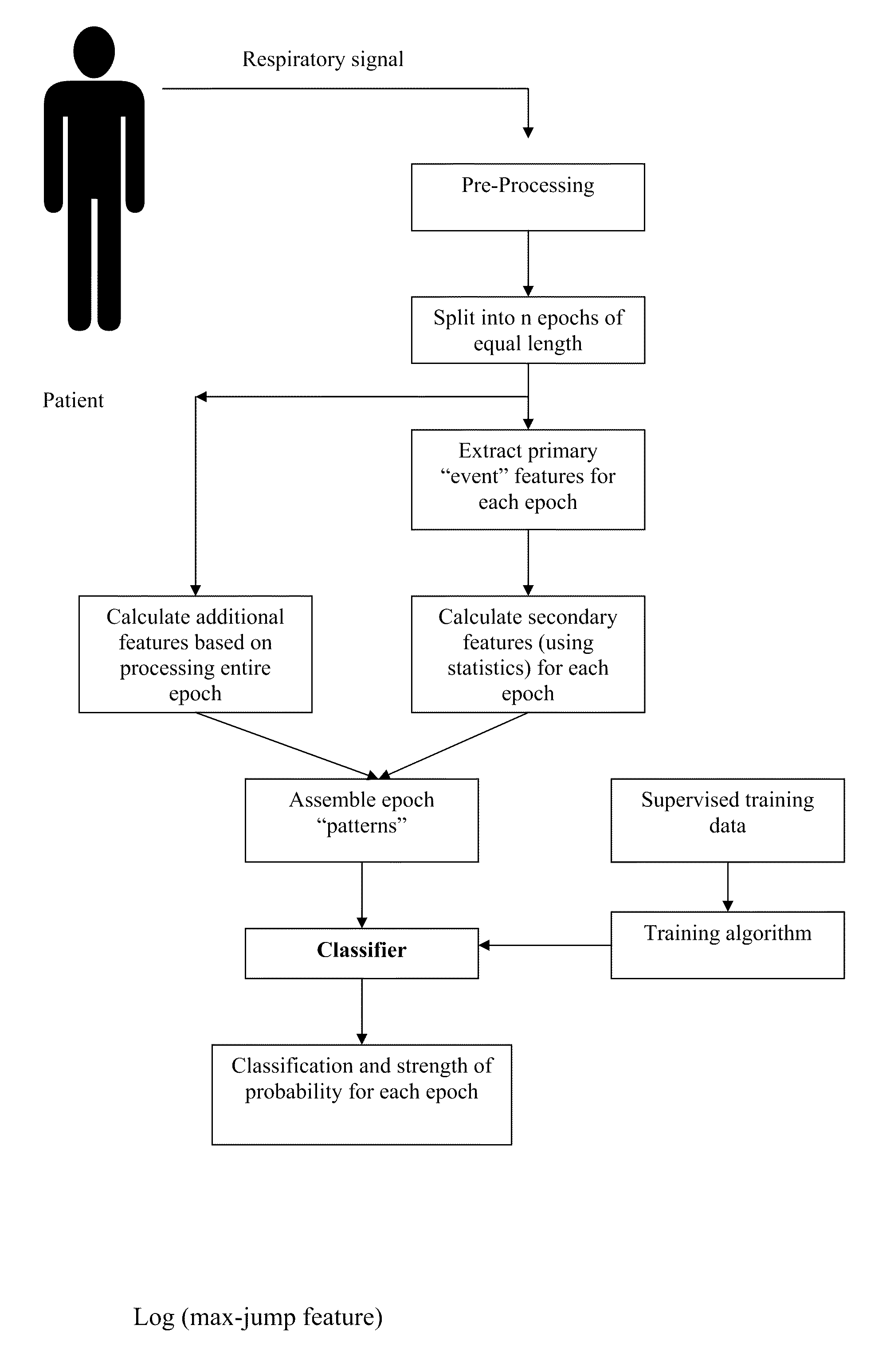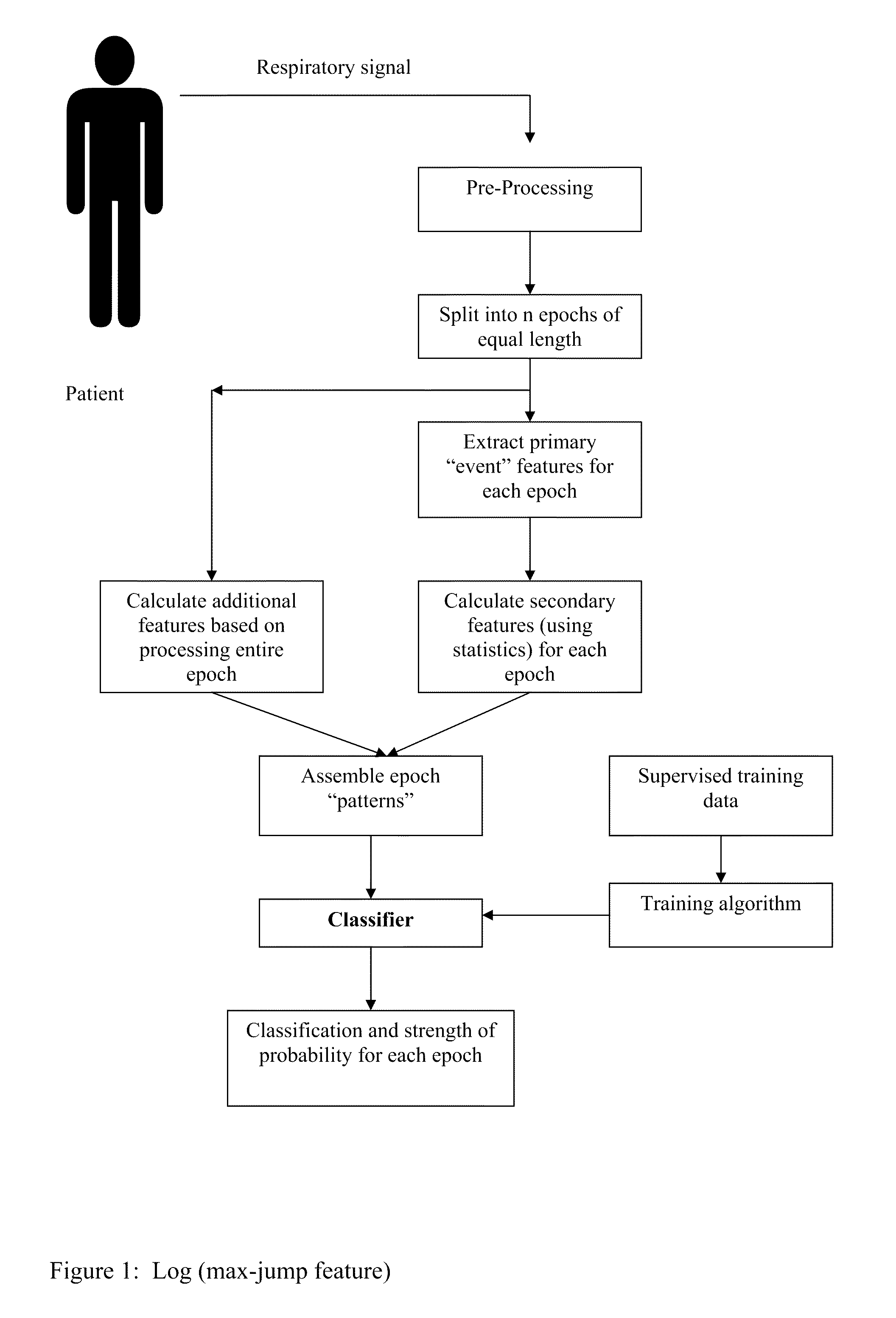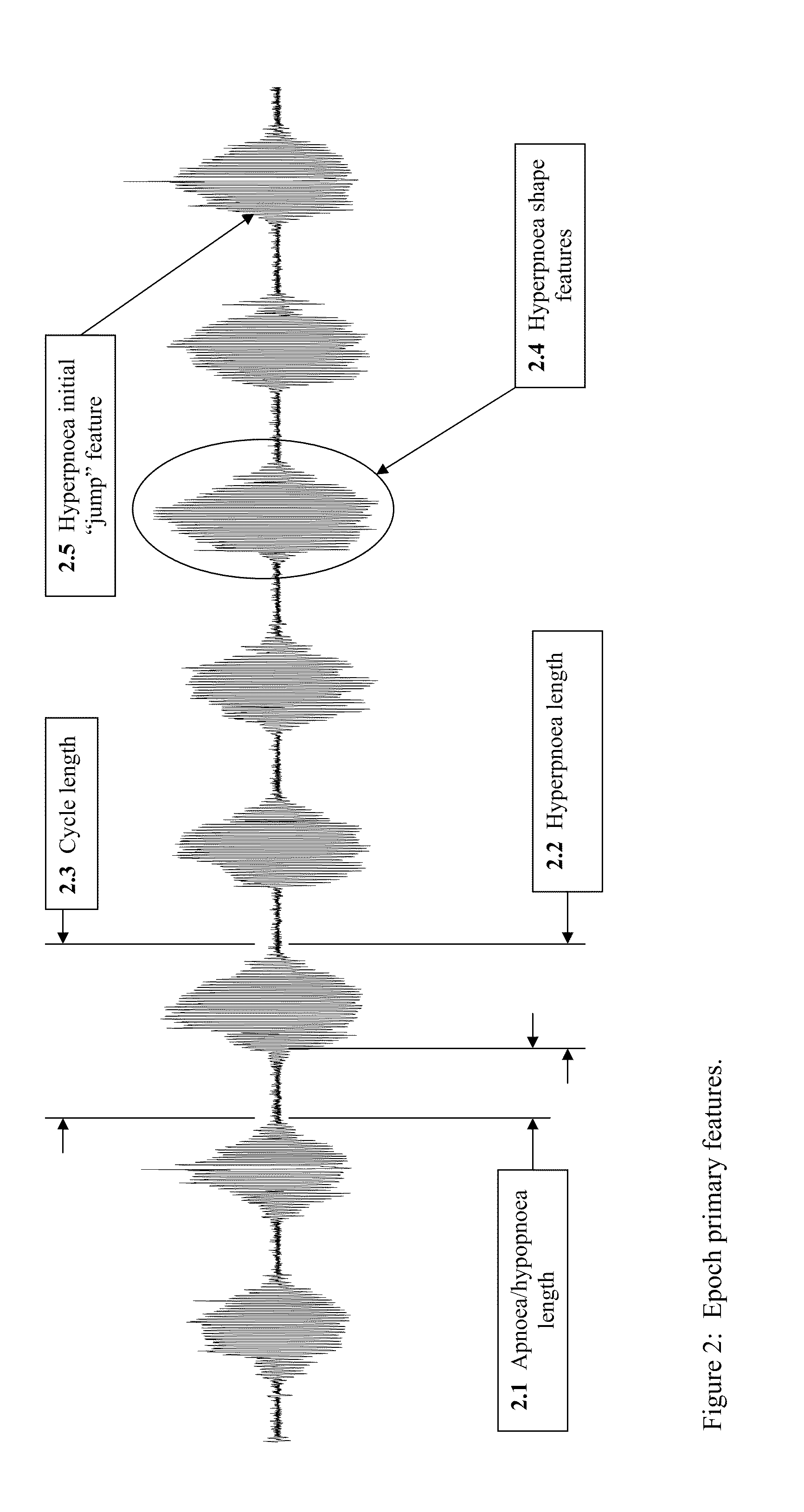Method for detecting and discriminating breathing patterns from respiratory signals
a breathing pattern and respiratory signal technology, applied in the field of methods, algorithms and diagnostic equipment, can solve the problems of csa (heart failure to pump adequately), and inability to detect breathing patterns
- Summary
- Abstract
- Description
- Claims
- Application Information
AI Technical Summary
Benefits of technology
Problems solved by technology
Method used
Image
Examples
example 1
[0073]A set of data for testing the ability of flow data to be classified into OSA and CS instances consisted of 90 patient studies of approximately 8 hours each. For purposes of the test, both nasal pressure, flow and two effort signals (abdomen & thorax) were recorded, making a confirming diagnosis of the underlying disease possible. The set was divided into 3 groups of 30 patients: OSAi(obstructive apnoea), CS and Mixed. The data were further classified (initially) on a 30-minute time-bin basis. The time periods were classified into the following categories: No apnoeas or hypopnoeas (90%); Primarily OSA (>90%); Primarily (>90%) apnoeas and hypopnoeas of mixed type (i.e. having a central component followed by a number of obstructed breaths); A combination of different events, typically brief periods of CS or mixed apnoeas interspersed between OSA; Patient is moving and the signal is of too low a quality to be useable.
[0074]Typically if CS disease is present, CS breathing will occu...
example 2
Flow Filtering
[0082]The flow is filtered first to remove unwanted and uninteresting high-frequency content. The filter used is a digital FIR (finite impulse response) filter designed using the Fourier method using a rectangular window. The filter has a pass-band from 0 to 0.9 Hz, a transition band from 0.9 to 1.1 Hz and a stop band above 1.1 Hz. The number of terms in the filter varies with sampling frequency. The flow signal is filtered by convolving the time series point-wise with a filter vector.
Ventilation Calculation
[0083]A long-term ventilation signal ylong is calculated using a simple (first order) low-pass filter applied to the flow signal. A time constant of 200 seconds is used (longer than the longest possible cycle of Cheyne-Stokes breathing). In order to measure ventilation (and not mean flow), the filter is applied to the square of the flow signal and the square root is taken of the filter output. Next, a ten-second ventilation y10 is calculated (a more “recent” measure...
PUM
 Login to View More
Login to View More Abstract
Description
Claims
Application Information
 Login to View More
Login to View More - R&D
- Intellectual Property
- Life Sciences
- Materials
- Tech Scout
- Unparalleled Data Quality
- Higher Quality Content
- 60% Fewer Hallucinations
Browse by: Latest US Patents, China's latest patents, Technical Efficacy Thesaurus, Application Domain, Technology Topic, Popular Technical Reports.
© 2025 PatSnap. All rights reserved.Legal|Privacy policy|Modern Slavery Act Transparency Statement|Sitemap|About US| Contact US: help@patsnap.com



